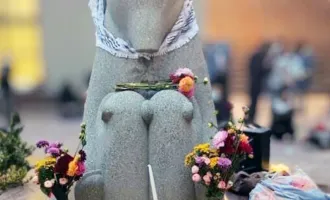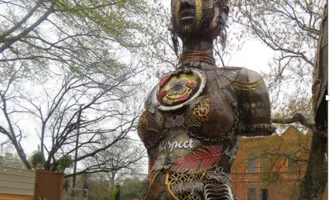
This Date In UCSF History: Necessary Dialogue
Originally published in Synapse on September 29, 1993.
A campus forum on “Interracial Racism,” held Sept. 21 in Toland Hall took a broad in look at racism in the U.S. as eight panelists talked about the complex relationships between different minority groups. A variety of viewpoints were represented, and the give-and-take was animated.
One common theme was that people of color are acutely conscious of their racial differences, and often regard one another with suspicion and distrust. Communities of color need to work together for the benefit of all; fighting one another detracts from larger and more important issues.
Vincent Ochoa, a managing attorney of the Centra Legal De La Raza, called interracial cooperation a “prescription for survival,” commenting that minorities were wasting their energy “fighting over crumbs of the pie when we should be cooperating to get pieces of it.”
Elaine Kim, a professor of Asian-American Studies at UC Berkeley, said that conflict among minorities stems from people of color adopting the “white supremacist model,” whereby they regard each other as inferior.
As an example, she analyzed tension between Asian immigrants and Blacks, saying that some Asians positioned themselves as “white” relative to Blacks since they tend to have more economic power; and some Blacks regard themselves as “white” relative to Asian immigrants, because blacks have more familiarity with the English language and American culture.
The role of the media in exacerbating conflicts between people of color was cited. Inflammatory stories — such as a recent one involving an Asian shopkeeper in Berkeley who maced a Black student — receive substantial attention and spark tension between groups.
The fact that most people of color get along perfectly well in their daily interactions does not get publicized. Most of the panelists and audience members agreed that the key to building strong relationships between communities of color is two-fold: learning the history of other groups as well as one’s own history, and the need for leaders and activists of different racial groups to go beyond ethnic divisions and build multi-racial coalitions.
All minority groups in America have endured similar struggles for basic human rights, and all people of color can take inspiration from successes such as the civil rights movement.
John Lavelle, director of Center for the S.P.I.R.I.T. in San Francisco, stressed the need for understanding history from diverse perspectives, pointing out that often even the most preliminary dialogues between people of color can lead to knee-jerk reactions and subsequent tension.
“We all come to the table with a very unique, precious understanding of our own suffering as a people,” Lavelle said.
It is up to community leaders, the panelists agreed, to publicly break down racial barriers and longstanding hostilities — a prerequisite if people of color are to start working together.
Tamera White, the panel moderator, described the situation this way: “We can’t talk about shaking hands when we owe each other money.”
The panel recognized that it is often difficult for minority leaders to take a public stand on behalf of another ethnic group.
They risk losing credibility among their “own people.” However, shouldering this “burden of leadership” will go a long way toward decreasing interracial animosity.
Several people pointed out that racist comments and actions tend to surface at gatherings of individual ethnic groups, and it is important to take stands for multi-racial unity in “private” settings as well as publicly.
All of the panelists spoke about racial issues from personal experience, and some expressed bitterness at the treat men t they had received from members of other ethnic groups.
Linda Olivera, President of the Mexican American Political Alliance, Oakland chapter, noted that there are definite conflicts between minority groups in Oakland, which is about 42% black and 15% Latino.
Olivera recounted several situations where she was frustrated by blacks who held positions of power in Oakland.
She noted the abysmal performance of the Oakland city government in providing bilingual education, and in establishing an affirmative action program for Latinos.
Despite having a racially diverse population, Oakland is still very much a segregated city. Olivera likened the situation of Latinos in Oakland today to that of blacks themselves in the 1960s and ‘70s, when they were demanding civil rights from whites.
In her opinion, learning about one another’s history as people of color is somewhat idealistic, and ranks a distant second to the immediate fight for decent jobs, education and health care.
The people from the Women’s Resource Center who organized the panel intended it to serve as a first step toward improving relations between ethnic groups.



